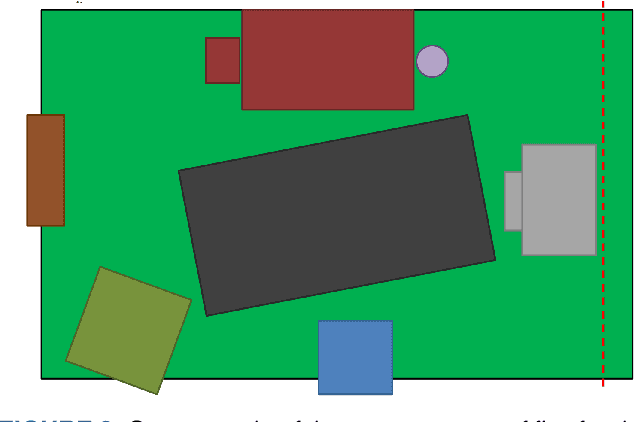Stefan Denkovski
Temporal Shift -- Multi-Objective Loss Function for Improved Anomaly Fall Detection
Nov 06, 2023Abstract:Falls are a major cause of injuries and deaths among older adults worldwide. Accurate fall detection can help reduce potential injuries and additional health complications. Different types of video modalities can be used in a home setting to detect falls, including RGB, Infrared, and Thermal cameras. Anomaly detection frameworks using autoencoders and their variants can be used for fall detection due to the data imbalance that arises from the rarity and diversity of falls. However, the use of reconstruction error in autoencoders can limit the application of networks' structures that propagate information. In this paper, we propose a new multi-objective loss function called Temporal Shift, which aims to predict both future and reconstructed frames within a window of sequential frames. The proposed loss function is evaluated on a semi-naturalistic fall detection dataset containing multiple camera modalities. The autoencoders were trained on normal activities of daily living (ADL) performed by older adults and tested on ADLs and falls performed by young adults. Temporal shift shows significant improvement to a baseline 3D Convolutional autoencoder, an attention U-Net CAE, and a multi-modal neural network. The greatest improvement was observed in an attention U-Net model improving by 0.20 AUC ROC for a single camera when compared to reconstruction alone. With significant improvement across different models, this approach has the potential to be widely adopted and improve anomaly detection capabilities in other settings besides fall detection.
Multi Visual Modality Fall Detection Dataset
Jun 25, 2022



Abstract:Falls are one of the leading cause of injury-related deaths among the elderly worldwide. Effective detection of falls can reduce the risk of complications and injuries. Fall detection can be performed using wearable devices or ambient sensors; these methods may struggle with user compliance issues or false alarms. Video cameras provide a passive alternative; however, regular RGB cameras are impacted by changing lighting conditions and privacy concerns. From a machine learning perspective, developing an effective fall detection system is challenging because of the rarity and variability of falls. Many existing fall detection datasets lack important real-world considerations, such as varied lighting, continuous activities of daily living (ADLs), and camera placement. The lack of these considerations makes it difficult to develop predictive models that can operate effectively in the real world. To address these limitations, we introduce a novel multi-modality dataset (MUVIM) that contains four visual modalities: infra-red, depth, RGB and thermal cameras. These modalities offer benefits such as obfuscated facial features and improved performance in low-light conditions. We formulated fall detection as an anomaly detection problem, in which a customized spatio-temporal convolutional autoencoder was trained only on ADLs so that a fall would increase the reconstruction error. Our results showed that infra-red cameras provided the highest level of performance (AUC ROC=0.94), followed by thermal (AUC ROC=0.87), depth (AUC ROC=0.86) and RGB (AUC ROC=0.83). This research provides a unique opportunity to analyze the utility of camera modalities in detecting falls in a home setting while balancing performance, passiveness, and privacy.
Multiple Sclerosis Severity Classification From Clinical Text
Oct 29, 2020



Abstract:Multiple Sclerosis (MS) is a chronic, inflammatory and degenerative neurological disease, which is monitored by a specialist using the Expanded Disability Status Scale (EDSS) and recorded in unstructured text in the form of a neurology consult note. An EDSS measurement contains an overall "EDSS" score and several functional subscores. Typically, expert knowledge is required to interpret consult notes and generate these scores. Previous approaches used limited context length Word2Vec embeddings and keyword searches to predict scores given a consult note, but often failed when scores were not explicitly stated. In this work, we present MS-BERT, the first publicly available transformer model trained on real clinical data other than MIMIC. Next, we present MSBC, a classifier that applies MS-BERT to generate embeddings and predict EDSS and functional subscores. Lastly, we explore combining MSBC with other models through the use of Snorkel to generate scores for unlabelled consult notes. MSBC achieves state-of-the-art performance on all metrics and prediction tasks and outperforms the models generated from the Snorkel ensemble. We improve Macro-F1 by 0.12 (to 0.88) for predicting EDSS and on average by 0.29 (to 0.63) for predicting functional subscores over previous Word2Vec CNN and rule-based approaches.
 Add to Chrome
Add to Chrome Add to Firefox
Add to Firefox Add to Edge
Add to Edge